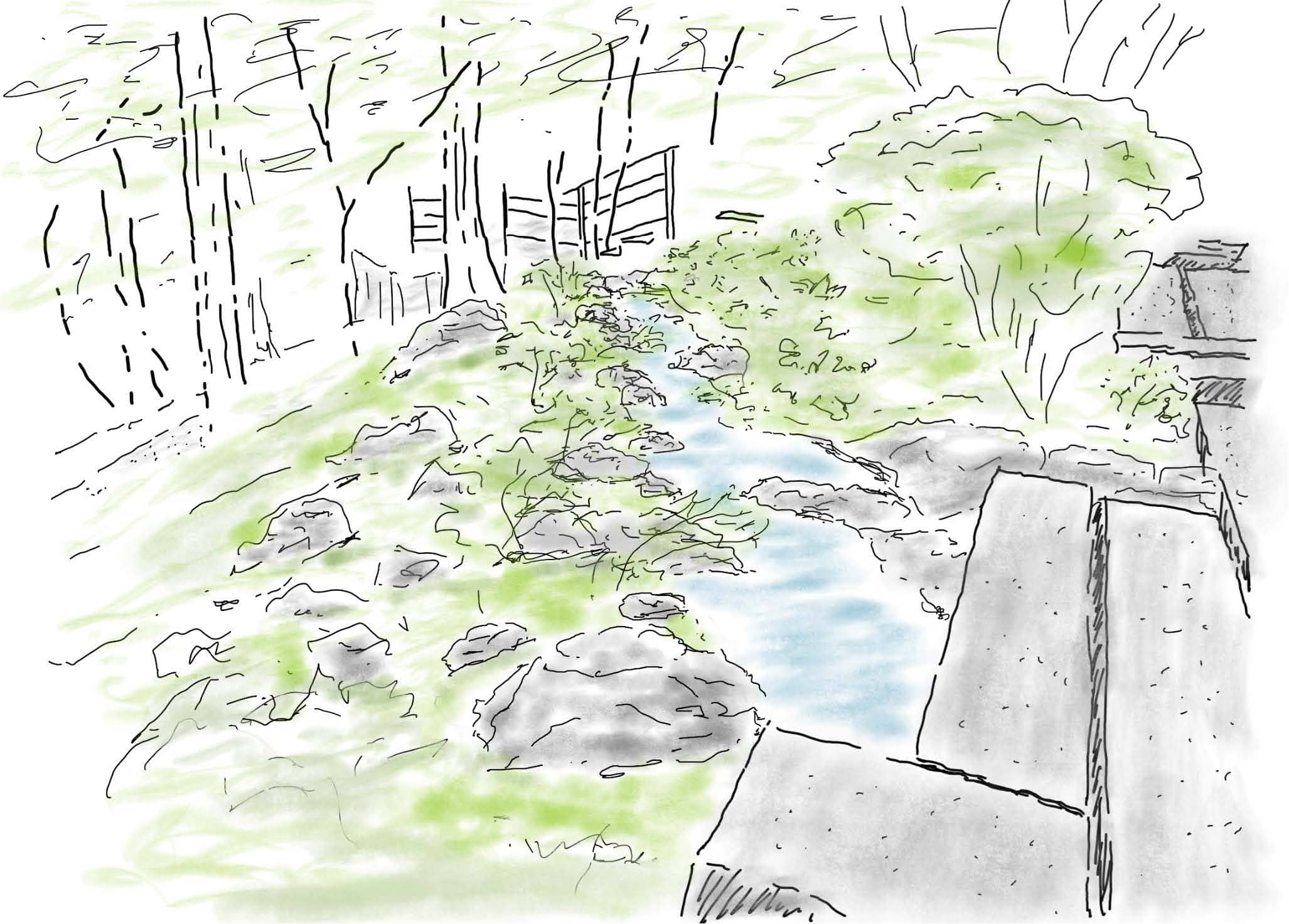
Rehabilitating A Space Meant to Look “Untouched by Human Hands”
By Will Lerner, Communications Manager for Portland Japanese Garden & Japan Institute
The Natural Garden, one of the five historic garden spaces at Portland Japanese Garden, had sections closed in September and October to address a water leak near Saka’s Pond, a feature near its entry. Saka’s Pond pays homage to Hachiro Sakakibara, Garden Director of Portland Japanese Garden from 1972 to 1974, who with help from his predecessor Hoichi Kurisu (1968-73), led the construction of the Natural Garden over the course of two winters. Here, Sakakibara implemented the design principles of a zoki no niwa (literally, “natural tree garden”), a Japanese garden style that paradoxically asks its gardener to design a forested space that looks untouched by human hands. It was a style popularized by Sakakibara’s sensei, the highly regarded niwashi (master gardener), Kenzo Ogata.
Saka’s Pond is a beautiful space with flowers that radiate pink in springtime, a pleasant waterfall, and dynamic stonework laid by Sakakibara. Below it is an area that has been sometimes referred to as “Saka’s Reservoir,” a continuation of the pond that was designed and constructed by former Garden Directors Takao Donuma (1985-87) and Toru Tanaka (1988-91). Unfortunately, because it was built on the edge of a slope, issues arose. Due to its placement, its foundation had been undermined and was subsequently seeing a loss of water. The leaks, in turn, were further undermining the foundation and causing the slope to erode even more. Altogether, the eroding slope, faulty foundation, and loss of water meant repairs were in order.
Related: Learn More About the Natural Garden
Over the course of two months, the Garden Department, led by Garden Curator Hugo Torii, alongside a contractor, moved ten yards of soil and eight tons of boulders without heavy machinery to narrow the reservoir and bring its perimeter further away from the slope’s edge. This was what Senior Gardener Jacob Knapp describes as the biggest project this current group of gardeners have undertaken, including mortar and concrete work, planting and transplanting, replumbing of water, pruning nearby flora, modulation of soil, and boulder setting. In addition to the physical labor and execution of its aesthetic redesign, the slope was recalculated to ensure that the water that runs down from Saka’s Pond toward the Natural Garden’s machiai (sheltered waiting arbor) would flow more like a natural stream.

“It was tricky to work in this area of the Natural Garden because it’s narrow and next to sensitive areas,” Knapp shares. “But our team had great energy throughout these past few weeks and never backed away challenges that we discovered throughout the process, such as learning that some of these 700-pound boulders were linked to the foundation with concrete, making their removal even more difficult. I am deeply thankful to our team for coming together to accomplish this beautiful renovation. It was a rare learning opportunity for us to experience the construction of a water feature—we’re better equipped to make similar repairs in the future.”
The Natural Garden, like all of Portland Japanese Garden, may appear to be still, but in reality, the land is constantly moving—trees sway in wind, water babbles in streams, and the earth is constantly adjusting underneath our feet. Because nature never takes a pause, it is the organization’s work to understand the landscape, be aware of how it’s ever changing, and recognize when it’s time to step in and rehabilitate it. In doing so, the land is then allowed to rehabilitate those who traverse it.

“When we look at the basic principles of Japanese gardens, they all ultimately point back to learning from nature,” shares Torii. “The Natural Garden reflects the teachings of Ogata sensei and his sensei, Juki Iida, who observed that people enjoyed forests with zoki (trees that are not actively maintained to be at human scale). These areas produced firewood because they were typically kept clean and tidy. When Japan became industrialized, they stopped using firewood and these zoki forests began to fade away. Ogata sensei began to replicate the experience in private residences. Ultimately, his vision and the purpose of the Natural Garden is to reaffirm our connection to nature, and enjoy the comfort it provides. I am very proud of the work my team did. Because of their efforts, the space can continue to be a healing place for our visitors for years to come.”